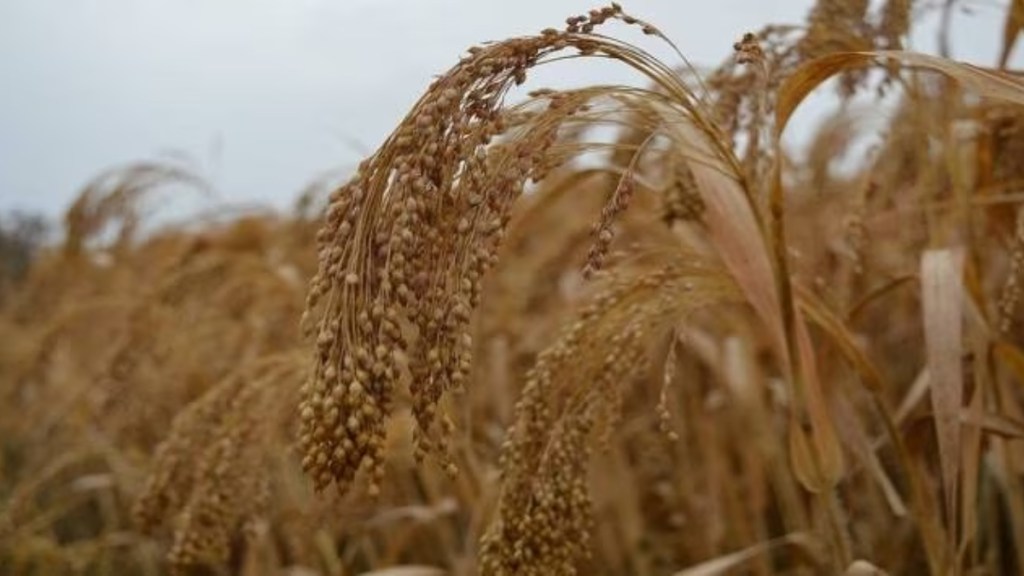By Shalander Kumar & ML Jat
Millets, which are climate resilient crops, and a powerhouse of nutrients, can help address one of India’s significant challenges: the triple burden of malnutrition. However, millet value chains face several challenges, including high entry costs for small processors, inconsistent demand, limited public procurement affecting harvest prices, and millet flour’s short shelf life, all leading to higher prices. Thus, the industry primarily targets wealthier, health-conscious urban consumers, making millets unaffordable for lower-income groups. Rural consumers, who get subsidised wheat and rice, are reluctant to buy millets. Consequently, millet farming becomes economically less attractive, with FAO data showing a 62% decline in sorghum and a 36% decline in millet cultivation areas from 1990 to 2020. These declines result from a mix of demand- and supply-side issues and policy signals.
Recently, governments and other stakeholders are actively promoting millets and sorghum for their health benefits and food production resilience in the country. However, these efforts have had limited impact on demand due to socio-economic, cultural, and market factors. Paradoxically, an undesirable market trend is seen where millet prices are high for urban consumers, while farmers receive low prices, as seen in the 2022-23 harvest for pearl millet.
To achieve the government’s goal of boosting millet demand, a crucial first step is to increase public procurement. However, the current government procurement of pearl millet and sorghum is only 1-3% of their total production, in stark contrast to the 45-70% procurement rates for wheat and rice. Finger millet has a somewhat better situation, with government agencies procuring approximately 15% of total production. Encouragingly, the government plans to procure two million tonnes in 2023-24.
The top priority should be to ensure competitive millet production for farmers. When crafting policies to boost millet production, it’s crucial to consider national food security as well. Currently, average millet productivity is 1-1.5 tonnes per hectare, significantly lower than rice. Shifting rice cultivation to millets without proper targeting could pose a risk to food security.
There is a need to identify the most suitable domains for millet production in different agro-ecosystems through multidimensional crop suitability analysis. In our cost-benefit analysis at the district level, taking 3-5 years’ time horizon for a few major states of India (namely Jharkhand, Chhattisgarh, Madhya Pradesh, Maharashtra, Odisha and Bihar), we found millets were on average more profitable than the rainfed upland rice in 125 major rice-growing districts with an average rice yield of 1.53 tonnes/hectare (ha). Similarly, 50 maize-growing districts with an average yield of 1.46 tonnes/ha, mainly in the states of Madhya Pradesh, Maharashtra, Chhattisgarh, Uttaranchal. Such districts, where the average productivity of upland rice and maize, or ‘competing crops’, is less than 2 tonnes/ha, could be the potential areas to target cultivation of millets. Location-specific demand for millet fodder for livestock can also be a factor in prioritisation.
At the same time increased R&D investment for breaking yield barriers, increased access to high yielding and resilient seeds for farmers, and scale appropriate mechanisation both for production and post-production would be critical.
Millets and sorghum currently make up around 6-7% of India’s staple diet. Nutritionists suggest that it can be increased to 15-20%. To achieve this, there should be public procurement and inclusion of millets in essential programs like the Public Distribution System (PDS), mid-day meals, Anganwadi centers, government-supported meal initiatives, hostels, and canteens. Their integration in large-scale non-government community kitchens needs to be encouraged. Industrial use, such as in animal feed, brewing, textiles, biofuels, and pharmaceuticals, needs to be promoted.
The procurement and distribution of millets may need to be more decentralised to smaller administrative units. A district or a cluster of districts may be enabled to become local centres for millet production, procurement, processing, and distribution. This will reduce the costs of transport and storage and minimise the risk of spoilage during storage and increase accessibility. Each district may be authorised to procure and distribute millets to PDS, mid-day meals, Anganwadi centres, government-supported meal programmes, hostels and canteens. Though the domestic market is the primary source of demand, the export demand for millets products is likely to increase too. We can take advantage of this potential increase in global demand only if the domestic supply and value chains are put in order. Supporting the exports of processed millets by engaging with SMEs and large private sector players, increasing R&D investment on increasing shelf-life and creating convenience products that retain nutrition, and using small-scale processing machinery to process at different scales needs to be prioritised.
Promoting millets as part of diverse diet is vital for advancing India’s nutrition, agricultural resilience, and future food security. Achieving this goal requires a well-planned, science-backed, and data-driven approach.
Co-authored by Abhishek Das
Authors are with International Crops Research Institute for the Semiarid Tropics (Icrisat)
Views are personal.


